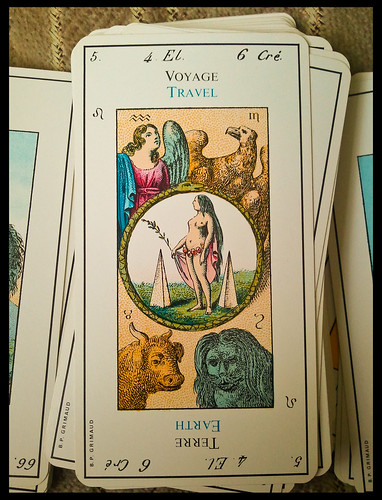These Tarot cards were created by Jean-Baptiste
Alliette and they were first issued around 1788. This desk is significant as it is the
earliest set of Tarot created under the supervision of a single visionary and
for it to be specifically designed to be read and used for magical
purposes. These cards were named after
the creator Alliette who reversed his name to form the Etteilla title for the
cards. Whether you favour these designs,
or find faults within them these cards are the root of much modern Tarot. The older traditional cards offer a glance
back into the origins of Tarot. These
cards show us the dawn of modern magical interpretations and guide us towards
our contemporary use of Tarot so from their point of production they shine a
light into the future that is still bright for viewers to this day.
Alliette claimed to have learned the symbology of Tarot
from an Italian contact. As a Print Seller
he would have seen many similar designs to those featured in his Tarot cards
and he may have adapted existing designs to form the illustrations in his Tarot. He was very particular about his cards having
an upright position and a reversed position.
The interpretation of his Tarot depends upon the dignity of the card
whether it be upstanding or upended. These
are the first cards known to be specifically designed to for Tarot
readings. Other earlier sets of cards
were possible formed from designs used for playing, or gaming cards. In 1790 Alliette publishes Cours theorique
et pratique du livre de Thot, or, Theoretical and practical course in the
book of Thot in which he distinguishes between the Major and Minor Arcana.



No comments:
Post a Comment